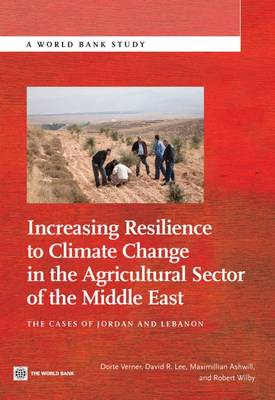World Bank Study
1 total work
Increasing Resilience to Climate Change in the Agricultural Sector of the Middle East
by Dorte Verner, David Lee, Maximillian Ashwill, and Robert Wilby
Published 10 April 2013
This publication aims to assist countries in understanding the specific challenges and opportunities posed by climate change in the agricultural sector in order to increase climate resilience and adapt to climate change. The report presents local-level priorities, informed by stakeholder input, to build agricultural resilience in both countries. The objectives of this study are threefold:
1. To improve the understanding of climate change projections and impacts on rural communities and livelihoods in selected regions of Jordan and Lebanon, specifically the Jordan River Valley and Lebanon's Bekaa Valley.
2. To engage local communities, farmers, local experts, and local and national government representatives in a participatory fashion in helping craft agricultural adaptation options to climate change.
3. To develop local and regional climate change action plans that formulate recommendations for investment strategies and strategic interventions in local agricultural systems.
Therefore, this publication may serve as the analytical underpinning for ongoing discussions taking place within the governments, including the Ministries of Agriculture and Environment, on how to best move forward in building agricultural resilience to climate change.
1. To improve the understanding of climate change projections and impacts on rural communities and livelihoods in selected regions of Jordan and Lebanon, specifically the Jordan River Valley and Lebanon's Bekaa Valley.
2. To engage local communities, farmers, local experts, and local and national government representatives in a participatory fashion in helping craft agricultural adaptation options to climate change.
3. To develop local and regional climate change action plans that formulate recommendations for investment strategies and strategic interventions in local agricultural systems.
Therefore, this publication may serve as the analytical underpinning for ongoing discussions taking place within the governments, including the Ministries of Agriculture and Environment, on how to best move forward in building agricultural resilience to climate change.
